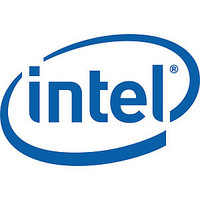lxt351 Intel Corporation, lxt351 Datasheet - Page 23

lxt351
Manufacturer Part Number
lxt351
Description
T1/e1 Short Haul Transceiver With Crystal-less Jitter Attenuation
Manufacturer
Intel Corporation
Datasheet
1.LXT351.pdf
(46 pages)
2.5.4.5
2.6
2.6.1
Datasheet
Built-In Self Test
LXT351 provides a Built-In Self Test (BIST) capability. The BIST exercises the internal circuits by
providing an internal QRSS pattern, running it through the encoders and the transmit drivers then
looping it back through the receive equalizer, jitter attenuator and decoders to the QRSS pattern
detection circuitry. If all the blocks in this data path function correctly, the receive pattern detector
locks onto the pattern. It then pulls INT Low and sets the following bits:
Note that during BIST, the TPOS/TNEG inputs must remain at logic level = 0
The most reliable test will result when a separate TCLK and MCLK are applied.
Parallel Microprocessor Interface
The LXT351 multiplexed address/data bus and timing/control signals are compatible with both the
Intel and Motorola microprocessors. See
each bus. The LXT351 detects and distinguishes between Intel and Motorola timing and then
automatically selects the appropriate bus timing. The maximum recommended processor speed for
an Intel device is 20 MHz; for a Motorola device, 16.78 MHz. See
page 33
The LXT351 contains five read/write and two read-only registers for control and status purposes.
Table 6 on page 24
function of the register bits.
Interrupt Handling
The LXT351 provides a latched interrupt output pin (INT). When enabled, a change in any of the
Performance Status Register bits will generate an interrupt. An interrupt can also be generated
when the elastic store overflows (TSR.ESOVR) or underflows (TSR.ESUNF). When an interrupt
occurs, the INT output pin is pulled Low. Note that the output stage of the INT pin has internal
pull-down only. Therefore, each device that shares the INT line requires an external pull-up
resistor.
The interrupt is cleared when the interrupt condition no longer exists, and the host processor writes
a 1 to the respective interrupt causing bit(s) in the Interrupt Clear Register (ICR). Leaving a 1 in
any of the ICR bits masks that interrupt. To re-enable an interrupt bit, write a 0.
•
•
•
TSR.TQRSS = 1
PSR.QRSS = 1
PSR.BIST = 1
for microprocessor interface timing details.
T1/E1 Short Haul Transceiver with Crystal-less Jitter Attenuation — LXT351
is a summary of the registers.
Figure 16
Table 7
and
Figure 17
through
Table 14
“Test Specifications” on
for the I/O timing diagram for
identify and explain the
23











